Our Green Stories in the Galleries

Welcome to Our Green Stories, a Museums Partnership Reading campaign exploring climate change, sustainability, and biodiversity loss through collections.
This online journey is designed to help us think about what we can do to care for the planet, both individually and collectively. The histories, practices, technologies, challenges, and solutions revealed as part of Our Green Stories connect with the work of the United Nations. Their Sustainable Development Goals offer a powerful framework for change at a time of environmental precarity.

Global journeys
Our journey begins with a brand. Shell oil began by trading seashells. The oceans these came from also held rich oil deposits formed from ancient marine life. Dependence on fossil fuels is a critical challenge. UN Sustainable Development Goal 13 calls for ‘urgent action to combat climate change and its impacts.’ Overreliance on oil, coal, and gas is a barrier to meeting this goal. Energy-related CO2 emissions increased 6% in 2021, reaching the highest levels to date. Rising temperatures and unpredictable weather patterns continue. The University of Reading logo features a scallop shell, representing Saint James and spiritual pilgrimage. So, shells signify nature, fossil fuels, and travel. What steps are you taking on the journey towards a more sustainable future?
Shell-Mex petrol pump globe (MERL 2010/36)

Sustainable resources
Traditional fish traps have been used for many thousands of years. 9 out of 10 of the world’s fishers still work in small-scale operations like the Democratic Republic of Congo context shown here. Similar traps called putchers have a long UK history. They were mounted seasonally on tidal weirs in the Severn estuary. Baskets were later replaced by metal and ongoing decline has been driven by salmon farming and overfishing by net. UN Sustainable Development Goal 14 invites us to ‘conserve and sustainably use … marine resources’. In the UK, most fish comes from large-scale, less sustainable sources. In some countries, tidal trapping remains common. Do you think local approaches like putchers should make a comeback?
Fish traps in the DRC (Julien Harneis, CC BY-SA 2.0, via Wikimedia Commons & Flickr)
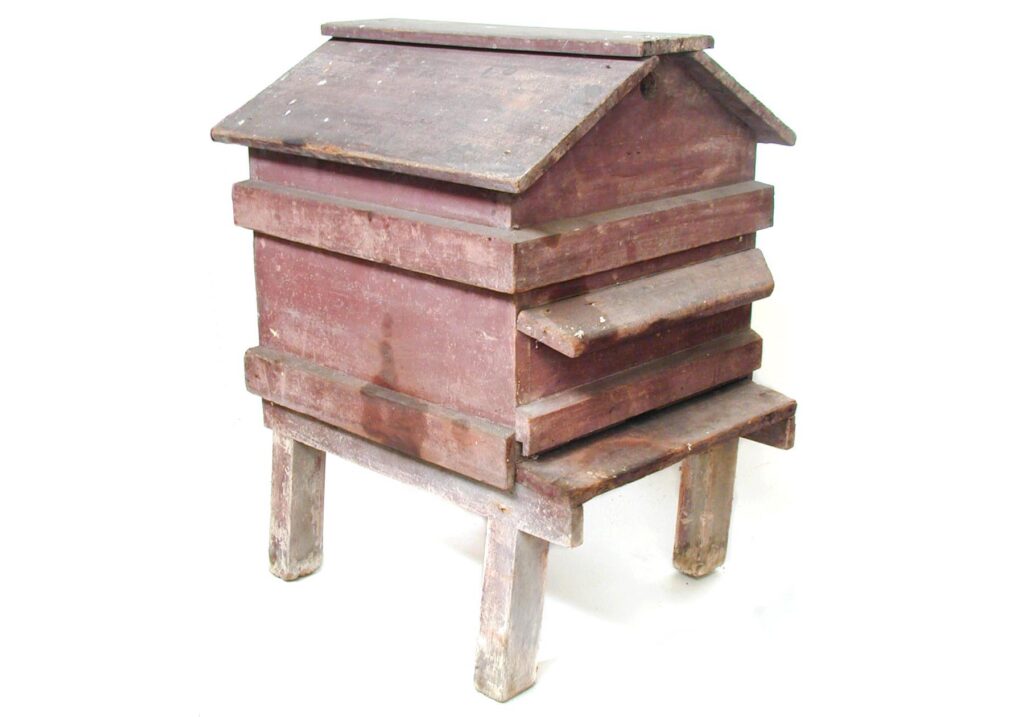
Bee aware
Beehives are instantly recognizable, showing how familiar we are with beekeeping, which humans have practiced for thousands of years. In the 1950s, the Museum had its own hive. Today the University of Reading has bee experts, and we have a bee meadow and bee hotel in The MERL garden. Bees are vital pollinators but they don’t pollinate cereals crops. Instead, they serve trees, flowers, grasses, and shrubs, which in turn support other species, including livestock and wildlife. But bee populations are under threat. Habitat loss, disease, and climate breakdown have put them at risk. Safeguarding them is essential if we want to meet UN Sustainable Development Goal 15 and ‘reverse land degradation and halt biodiversity loss.’
Traditional wooden beehive (MERL 82/27)
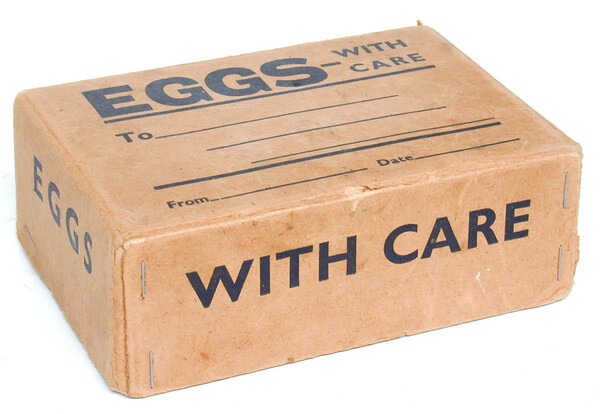
Homegrown produce
Food security was a major issue during the Second World War and remains a challenge today. Producers face climate uncertainty, modern conflicts, trade obstacles, barriers to recruiting migrant workers, and concerns about land use. In the UK around 45% of food is imported but this is a moveable feast. We’ve been importing food for centuries but many overseas foodstuffs have been grown in problematic contexts, under colonialism or forced labour. How fair is today’s food for those who produce it? The UK is self-sufficient for many foods but tomatoes and lettuces have declined, bird flu has seen egg production plummet, and climate change is impacting what we can grow. What foods will we grow in the UK in 100 years?
Box for home delivery of eggs (MERL 87/23)
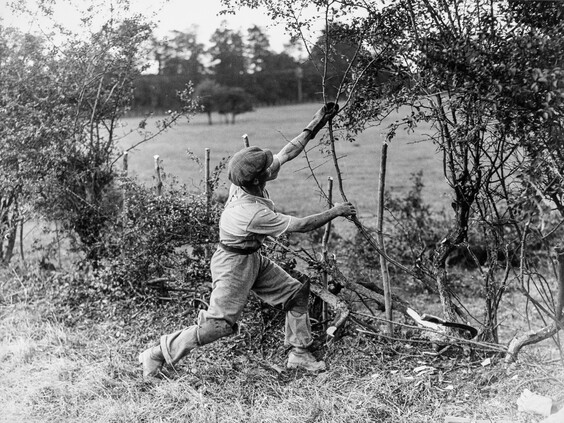
Wildlife corridors
Historically, the UK’s ancient hedgerows supported a wealth of biodiversity. Following the Second World War, changes led to more machinery, less crop rotation, bigger fields, and fewer funds for hedges. This meant larger gateways and fewer field boundaries. Many farmers removed or reduced hedges, placing these wildlife corridors under threat, and endangering hedging skills and tools By the 1960s, 10,000 miles of hedging was being lost every year. Today, campaigners from the CPRE (The Countryside Charity), Woodland Trust, and our friends at the Food Museum aim to increase hedgerows 40% by 2050. Hedges increase biodiversity, help clean air, capture carbon, and reduce flooding.
Hampshire hedger at work (MERL P DX289 PH2/12/867C)
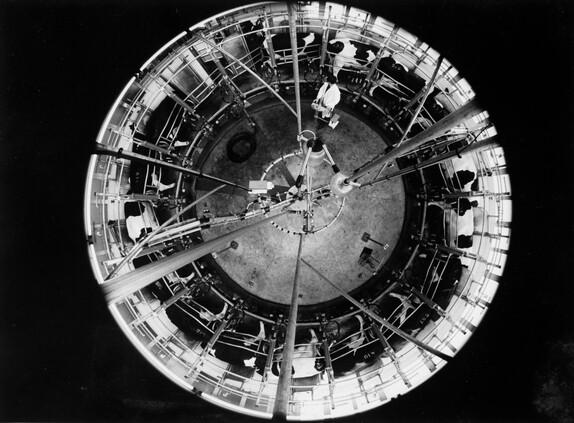
Milk and Methane
Livestock cause around 40% of all global methane emissions, a major greenhouse gas. The majority of this comes from cattle meaning beef and dairy come at a major climate cost. The National Farmers Union believes UK farms can achieve net zero by 2040. University of Reading researchers have designed diets for dairy cattle to reduce methane levels. Many advocate for more grassfed production but will all of this help? It is easy to blame farmers. But big companies drove down prices, encouraging intensive production to meet consumer demand for cheap produce. As well as reducing cattle numbers and finding climate smart solutions, perhaps we need to place a higher value on food.
Rotary milking parlour (MERL P 2FW PH2/1227/4)
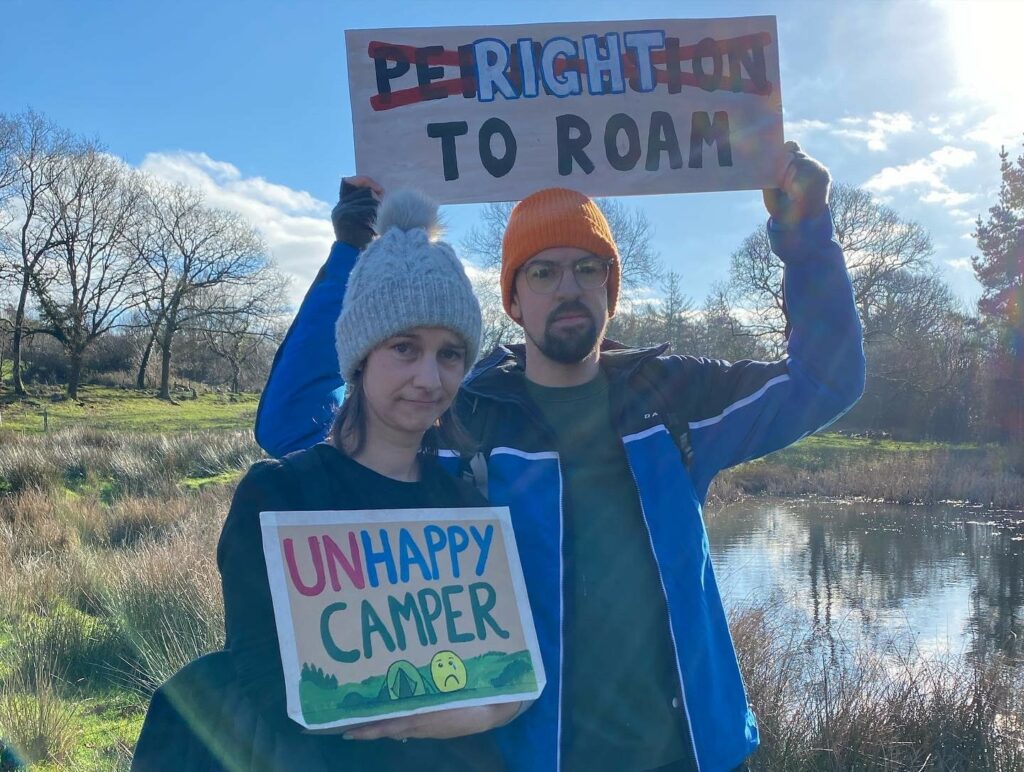
Unhappy campers
Direct action—marches, protests, boycotts, demonstrations, petitions, trespass, and damage—aims to encourage people to think critically about planetary harm. In the 1990s, Jim Hindle camped up a tree to raise objections to the construction of a road. Although the project eventually proceeded, his protest clothing is now held in The MERL collection and his protest continues to inspire contemporary nature campaigning. Just Stop Oil and Extinction Rebellion use extreme actions to make us think about the climate emergency. Right to Roam and Land in Our Names shed light on who has access to green spaces and, more importantly, who does not.
Wild camping protest organised in 2023 by Right to Roam (Image courtesy @SonjaNisson)
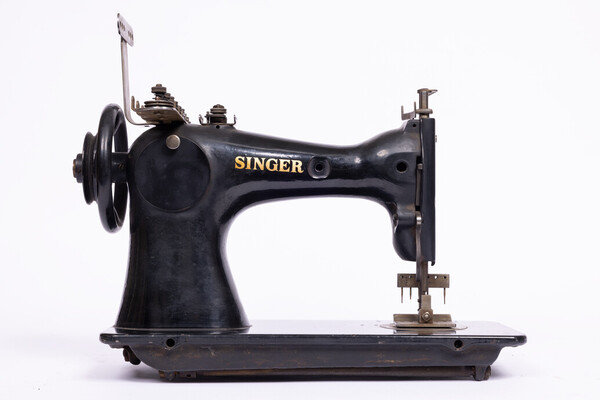
Fast Fashion
Sewing machines were developed to remove the hard work from making clothes but led to an uplift in cheap production. Sweatshops emerged in nineteenth-century England and the approach was soon exported. The fashion industry is now responsible for 10% of greenhouse gases and millions of unrecyclable garments. The demand for cheap clothing lies behind high levels of child labour in clothing factories but also on some cotton farms. The impacts of fast fashion are largely invisible at point of purchase. Garments carry information about place of manufacture but not about working conditions or environmental impacts. UN Sustainable Development Goal 12, to ‘ensure sustainable consumption and production’ will be hard to meet without change.
Industrial Singer sewing machine made in 1902 (MERL 81/116)
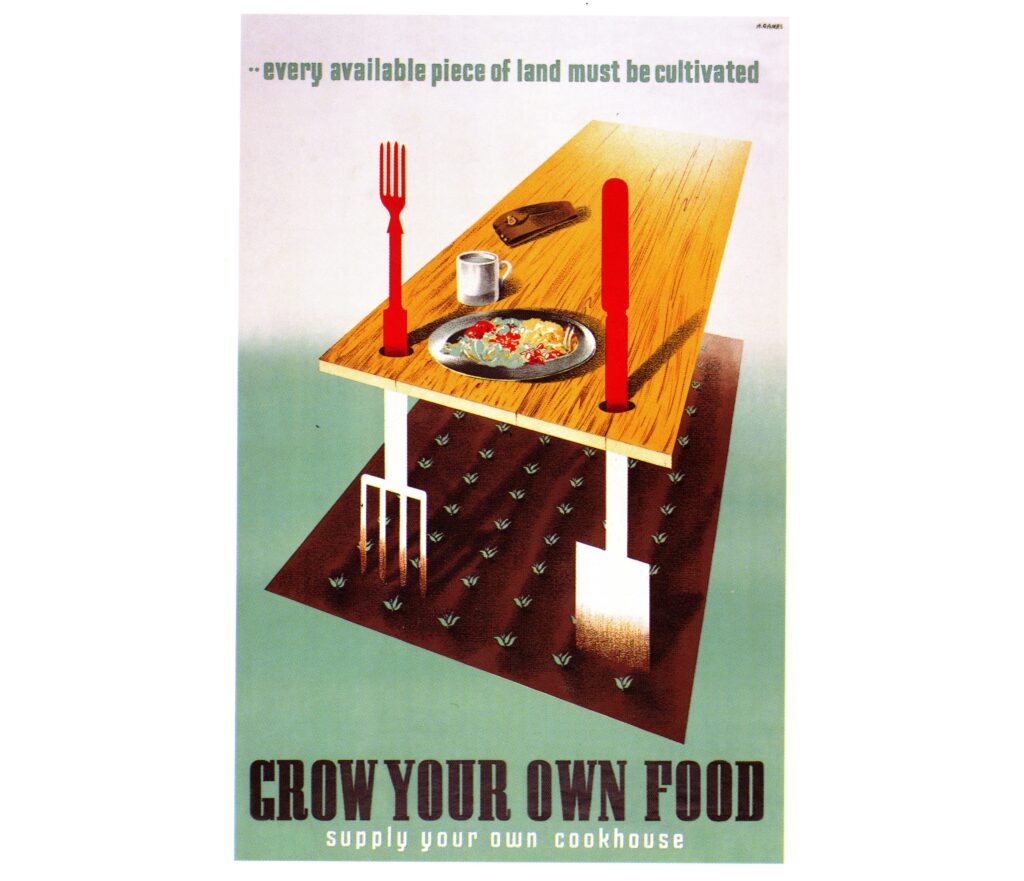
Grow Your Own
Allotments emerged from people pushing back against enclosures. Farm workers demanded space to grow food to supplement their income. Fair and equitable access to land can help lift communities out of poverty, fostering positive impacts on health, wellbeing, biodiversity, and responsible consumption. It is a step to addressing UN Sustainable Development Goal 2, to ‘end hunger, achieve food security and improved nutrition and promote sustainable agriculture.’ The idea of ‘growing your own’ may seem like a middle class fad, but in a time of food banks and environmental pressure, community and home gardening might help us to combat food insecurity.
Second World War poster by Abram Games (MERL 2009/9)
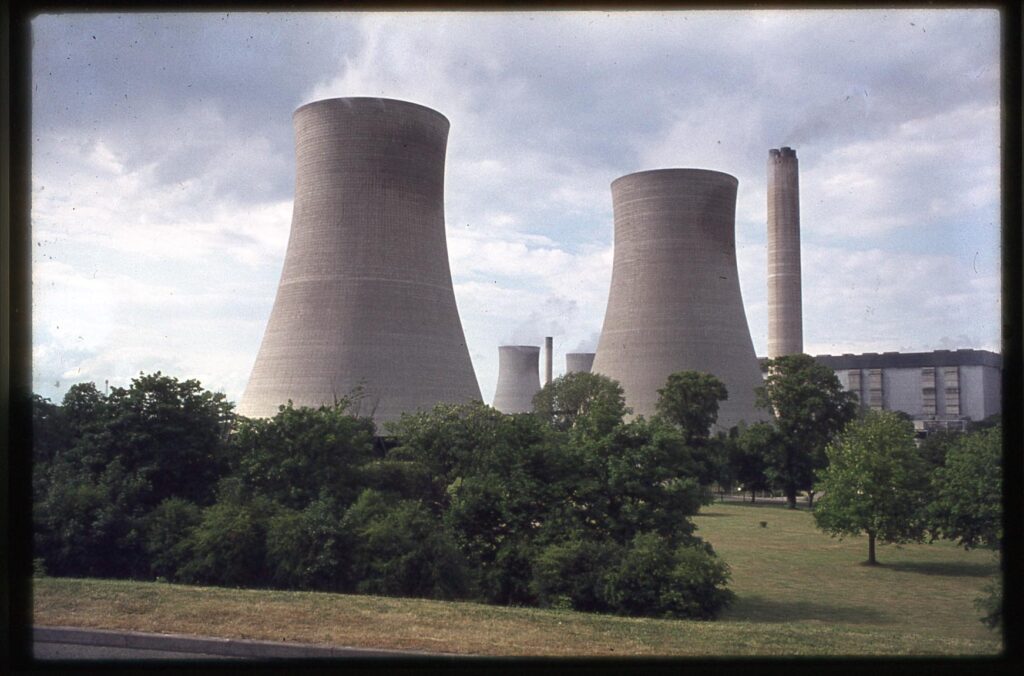
Renewable Energy
As we attempt to reduce our reliance on fossil fuels, conflict and uncertain supplies are driving prices up and energy companies are reporting record profits. How we light and heat our homes has long been subject to external pressures. Land enclosures took away the right to gather fuel. In the eighteenth century tallow wicks and rushlights became popular because candles were heavily taxed. UN Sustainable Development Goal 7 calls for ‘affordable, reliable, sustainable and modern energy for all.’ But what future changes might we see to UK energy? Renewable sources—solar, wind, water, ground, and air—will all help lower costs and may reduce reliance on big energy companies.
Didcot power station, now decommissioned (MERL P TAN PH5/7.8/116)
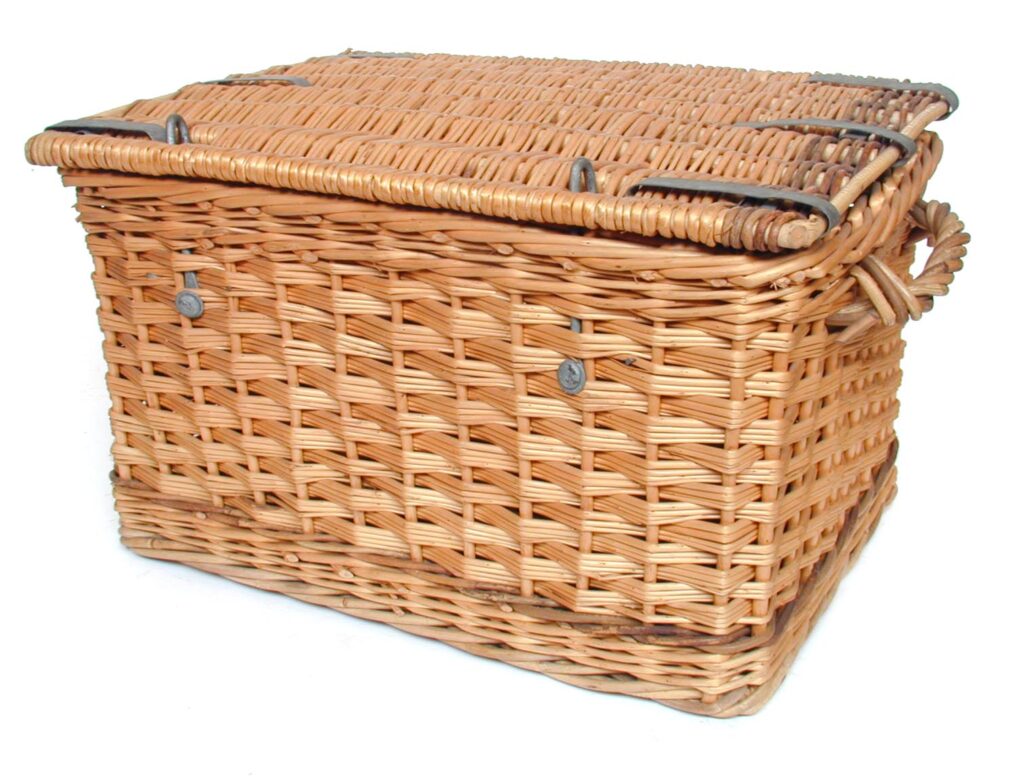
Eco-friendly packaging
Before cardboard and plastics, basketmaking was a thriving, sustainable and vital industry. Traditional designs were made using home-grown materials and skills to move local products. Although reusable, biodegradable, and recyclable packaging is preferable, we still buy many goods packed in other ways. We pack groceries in plastics; chargeable and returnable but still harmful. Shipments arrive in cardboard, which can be recycled but still has a notable carbon footprint. Baskets were easily reused and were even eco-friendly when broken. So, the past and heritage craft may offer one solution. Meanwhile, modern material scientists are developing biodegradable and naturally-derived plastic substitutes.
Basket for transporting vegetables (MERL 63/204)

Agri-tech Revolutions
Robots, machine learning, gene editing, vertical farming, lab-grown meats, and other transformational changes have been described as the ‘fourth agricultural revolution’. But earlier shifts—heavy cultivation, fossil fuels, intensified production, high yield varieties, synthetic fertilisers, and pesticides—had negative as well as positive impacts. The ‘third agricultural revolution’ or ‘green revolution’ helped tackle global food shortages but caused immeasurable harm to the environment. UN Sustainable Development Goal 2 has similar aims, to ‘end hunger, achieve food security and improved nutrition’ but it packages this with the goal of promoting ‘sustainable agriculture’, ensuring that the good of the planet is not considered separate to the health of humanity.
Ferguson System advertisement (Festival of Britain Guide, 1951)
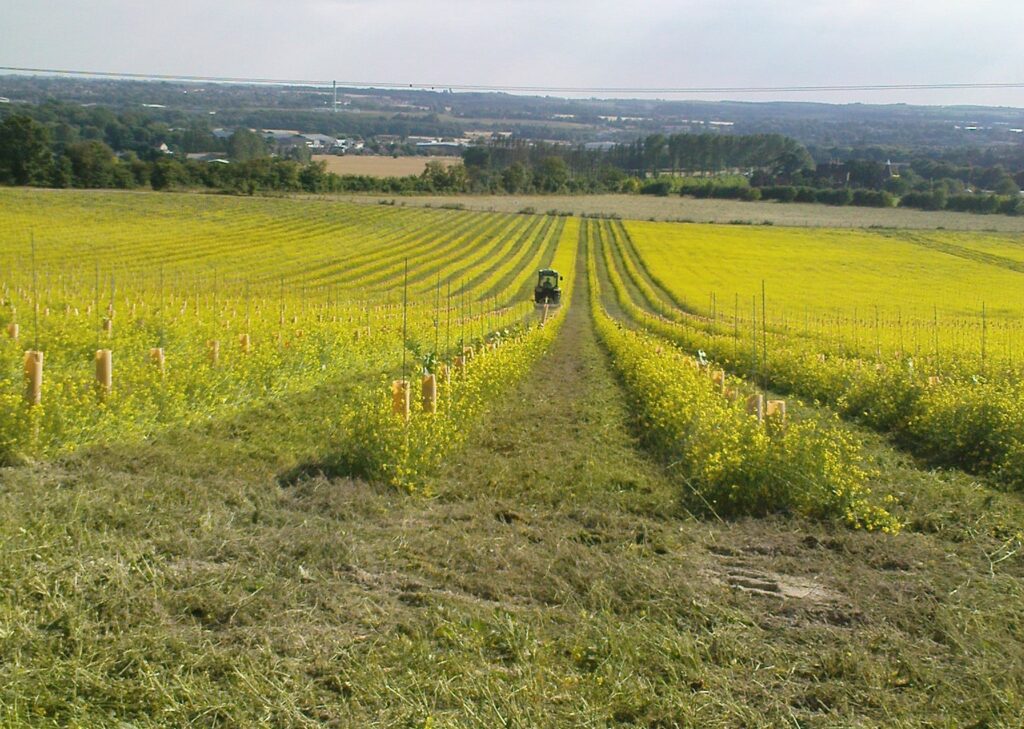
Local breeds and seeds
Climate change means different plants and animals will begin to thrive in the UK. For example, as England warms, vineyards have become more viable. Meanwhile, Spanish olive producers face major droughts and lower yields. Traditional cultivars and rare breeds are living gene banks. They may hold answers to disease and drought. UK heritage crops researched by archaeobotanist John Letts are in use by organic farmers. Indian rice varieties kept for family consumption have been found to harbour desirable properties. Community knowledge raises important questions about intellectual property. What crops will we be able to grow as our climate changes? What will these changes mean for the crops and foodstuffs associated with British agriculture?
New vineyard in the UK (Joe31600, Public domain, via Wikimedia Commons).
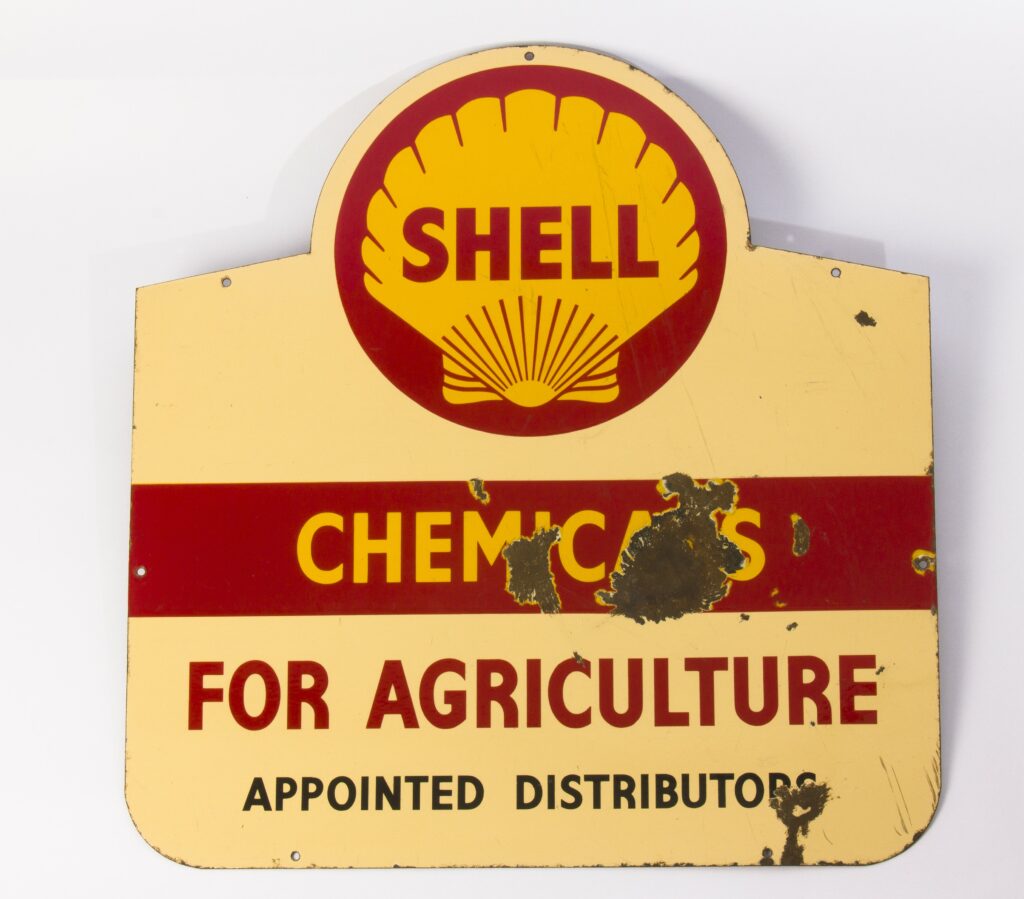
Finite fertilizer
In the nineteenth century, Horatio Bland imported Peruvian guano—seabird droppings—for use as fertilizer. The profits enabled him to gather many objects that would later go on to form the founding collection of Reading Museum. In the twentieth century synthetic fertilizers took over and this familiar shell logo became part of the story. The so-called ‘green revolution’ brought chemical interventions designed to maximise yield. Organic farmers now seek to maintain yield without artificial interventions but this can be hard. One alternative to chemicals is to keep livestock to fertilize fields naturally. But farmers are also being pressured into reducing livestock numbers due to climate impacts.
Shell chemicals for agriculture sign (MERL 2009/51)

Wet and dry
In the past, communities relied on village pumps like this. Many rural homes are still supplied by local sources, even if they no longer use hand pumps or wells. It can be hard for many people to imagine life without plentiful clean water. UN Sustainable Development Goal 6 aims to ‘ensure availability and sustainable management of water and sanitation for all.’ After natural disasters water and sanitation engineers are vital early responders. Climate change means a new relationship with droughts and floods. Once limited to rare events like the ‘hot summer of 76’ or ‘bad winter of 47’, UK extremes are becoming more common. These shifts are reaching greater extremes in other parts of the globe.
Village pump in East Hendred (MERL P DX2049 PH5/52)
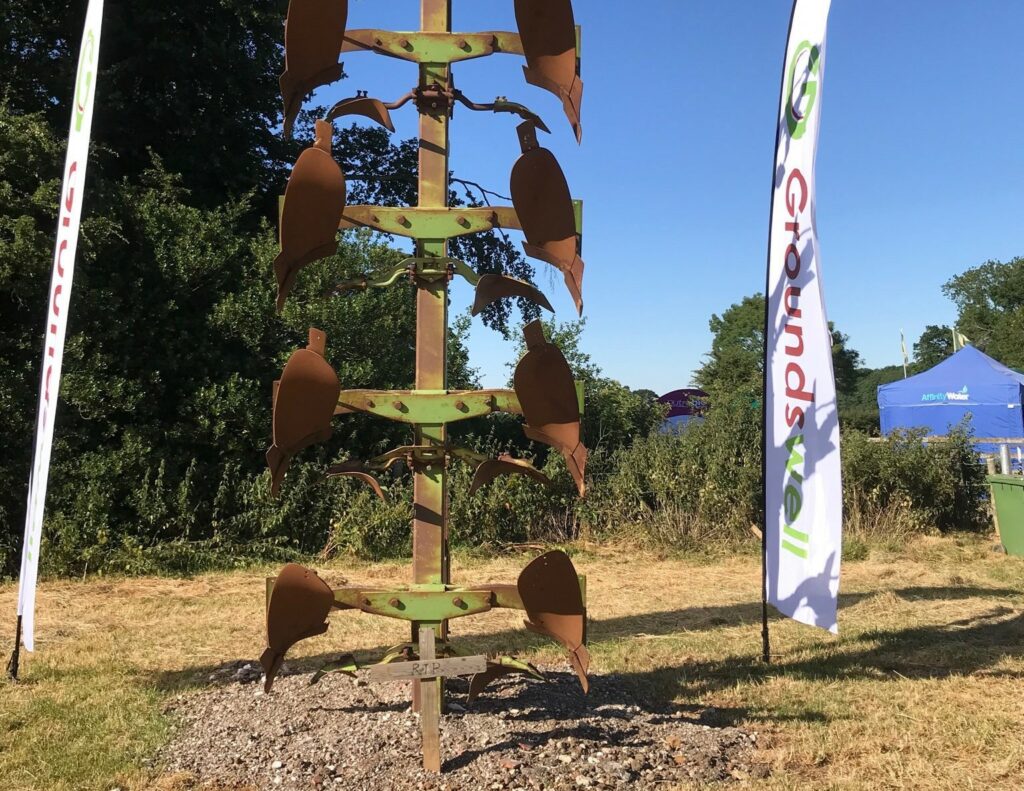
Ploughing on
For thousands of years, ploughs have been used to prepare farmland. They have become emblems of progress and peace. In 1959, the USSR gave the UN a sculpture called ‘Let Us Beat Swords Into Ploughshares’. Mention of ‘sustainable agriculture’ as part of UN Sustainable Development Goal 2 reveals a shift. The emergence of no-till approaches mean ploughing is becoming less important. This ‘Bury the Plough’ sculpture at Groundswell festival reveals that many farmers now recognise the harm of overcultivation. The Museum’s collections emphasise how important ploughs are to our past. From ‘Plough Monday’ to ‘Speed the Plough’, these links will be hard to forget. What future adaptations from regenerative farms will we celebrate and collect?
‘Bury the plough’ sculpture at Groundswell (Image courtesy @TalkingGrass, who blogs at Talking Grass)
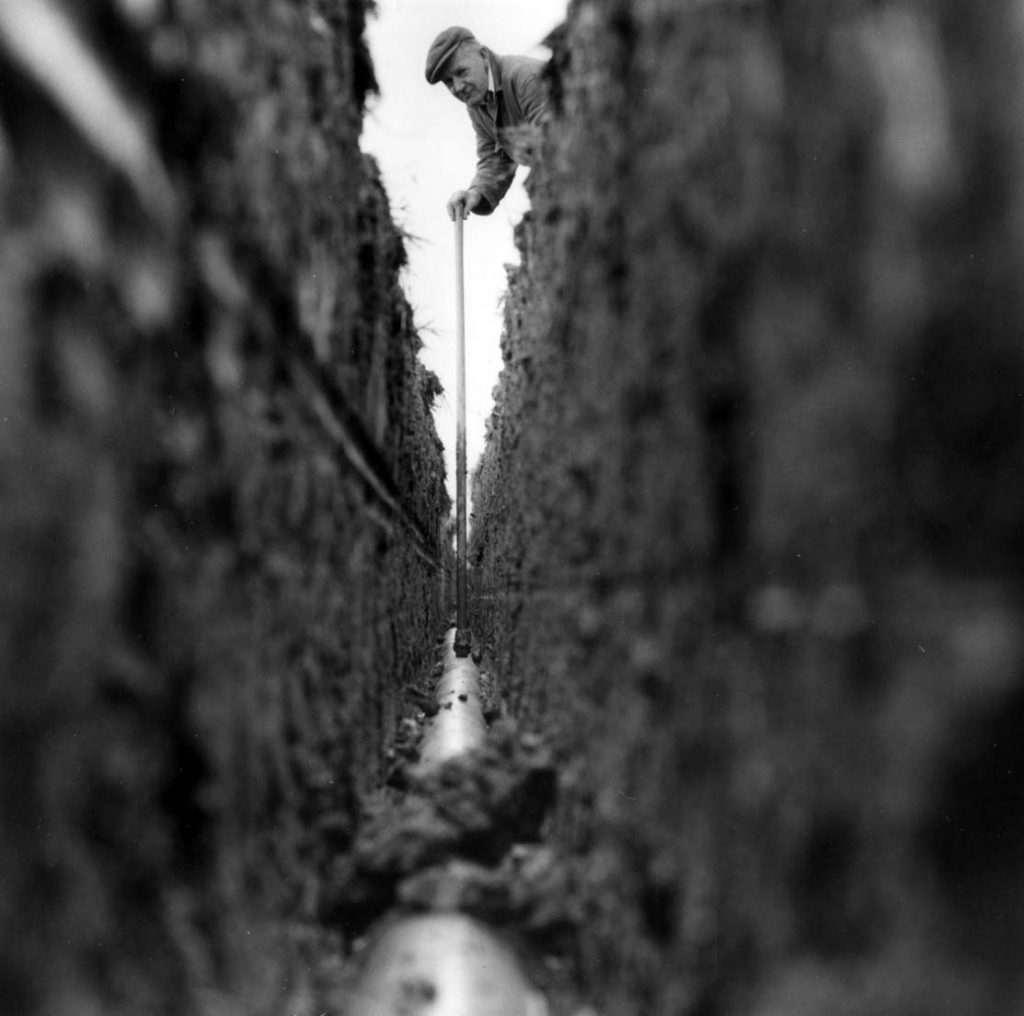
Water, water everywhere
Networks of drainage and irrigation crisscross agricultural land. Some allow waterlogged land to be cultivated and others bring moisture to drier ground. Excess floodwater needs somewhere to go. Water runs off hard urban surfaces and away from farmland, but at peak times it impacts on housing and fields. The needs of farmers clash with the needs of those whose homes are threatened. Food security, domestic life, and environment are at odds. As seas rise and floods worsen, the wording of UN Sustainable Development Goal 14—‘Life Below Water’—takes on a new meaning. Natural flood management and modern infrastructure provide some answers. But farming must become climate smart and we must avoid paving surfaces so that water can drain away.
Checking subsoil drainage (MERL P 3FW PH2/680/3)
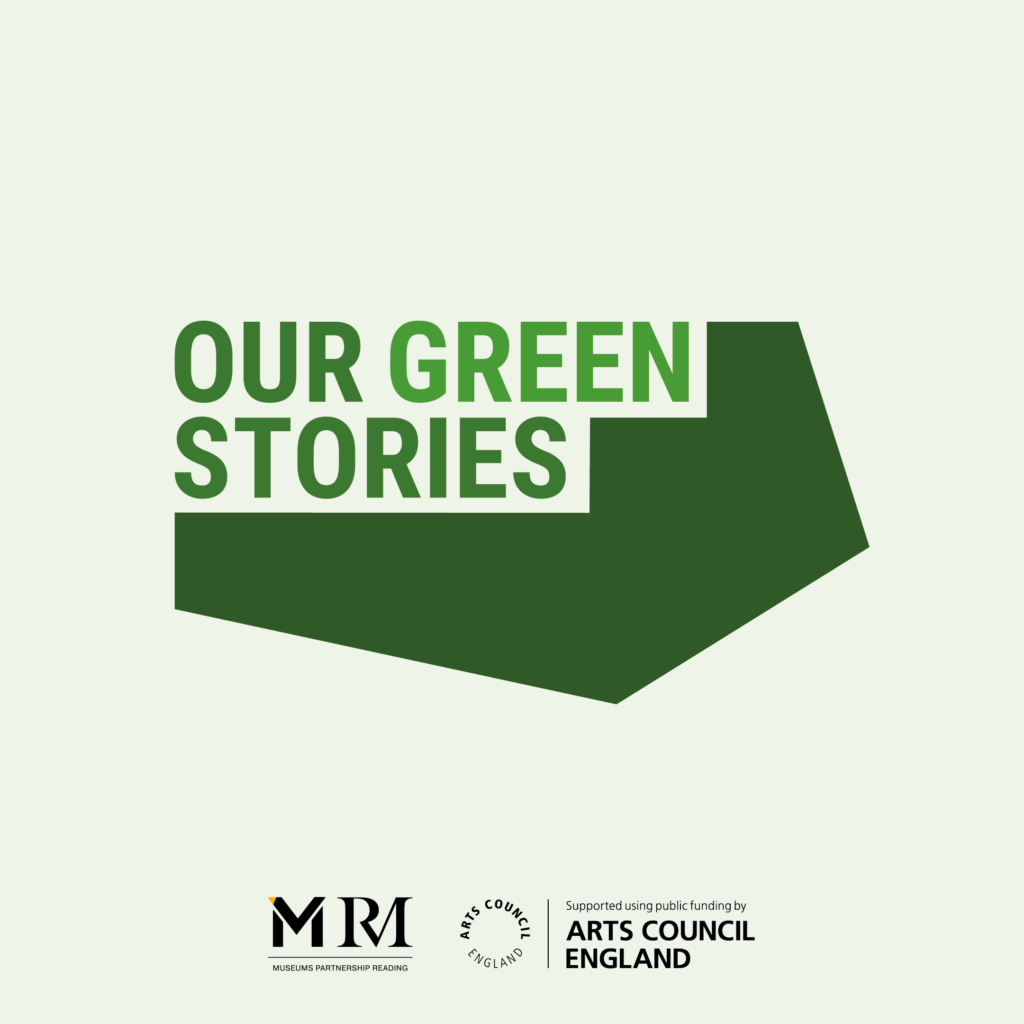
A greener future
We hope that this journey of ideas, histories, and challenges helps you to think critically about climate change, environmental harm, and how we might learn to live more sustainably. For the duration of the Our Green Stories creative campaign, this journey will also be available as a trail through The MERL galleries. Additional displays and content will be shared by The MERL and by Reading Museum, so watch this space.
Our efforts to connect collections to UN Sustainable Development Goals has been guided in part by Curating Tomorrow. It reflects wider efforts to align the work of the University of Reading with these important aims.